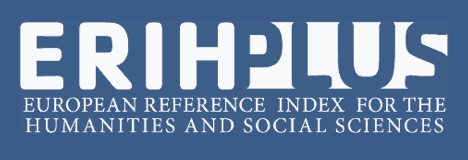Insertion of principles of anthropogeomorphology on the secondary school: subsidies for the development of cartographic language and conceptions of physical geography
Abstract
The objective of this work was to present the results of cartographic tests carried out by high school students to classify land use and land cover in a scenario possibly free from anthropogenic disturbance. Based on this presentation we aim to discuss the potential application of principles of Anthropogeomorphology for the development of skills related to the geographic reasoning of these students. The cartographic documents were elaborated based on photo interpretation of anaglyph images produced in a free software environment. The adaptation of methodological procedures of Anthropogeomorphology provided subsidies for the recognition of the stage of anthropic intervention in a past scenario, and also assisted in the preliminary analysis of the temporal evolution of land use and land cover and in the definition of violations of current environmental regulations. Thus, the theoretical and methodological assumptions adopted in this study constitute a resource in the teaching-learning process of cartographic language and environmental issues in secondary education.
References
BRASIL. Lei nº 12.651, de 25 de maio de 2012. Dispõe sobre a proteção da vegetação nativa; altera as Leis nos 6.938, de 31 de agosto de 1981, 9.393, de 19 de dezembro de 1996, e 11.428, de 22 de dezembro de 2006; revoga as Leis nos 4.771, de 15 de setembro de 1965, e 7.754, de 14 de abril de 1989, e a Medida Provisória nº 2.166-67, de 24 de agosto de 2001; e dá outras providências. Diário Oficial [da] República Federativa do Brasil, Brasília, DF, 28 maio 2012. Disponível em:
INSTITUTO BRASILEIRO DE GEOGRAFIA E ESTATÍSTICA - IBGE. Manual técnico de uso da terra. 3. ed. Rio de Janeiro: IBGE, 2013.
KÖPPEN, W.; GEIGER, R. Klimate der Erde. Gotha: Klett-Perthes, 1954. 1:16.000.000.
LIMA, R. P. O processo e o (des)controle da expansão urbana de São Carlos (1857-1977). 2007. 193 f. Dissertação (Mestrado em Teoria e História da Arquitetura e do Urbanismo) – Escola de Engenharia de São Carlos, Universidade de São Paulo, São Carlos, 2007.
NIR, D. Man, a geomorphological agent: an introduction to anthropic geomorphology. Jerusalem: Keter Publishing House, 1983.
PINTON, L. de G.; MATOS, A. L. Aplicação da cartografia geomorfológica de detalhe no ensino médio: subsídios à compreensão da ordem taxonômica da classificação do relevo brasileiro. In: SIMPÓSIO NACIONAL DE GEOMORFOLOGIA, 12., 2018, Crato. Anais... Crato: Universidade Regional do Cariri, 2018. p. 1-11.
PINTON, L. de G.; OLIVEIRA, L. C. de. Potencialidades de aplicação da cartografia geomorfológica de detalhe no ensino médio através da análise de cartas topográficas. In: SIMPÓSIO NACIONAL DE GEOMORFOLOGIA, 12., 2018, Crato. Anais... Crato: Universidade Regional do Cariri, 2018. p. 1-10.
RODRIGUES, C. Geomorfologia aplicada: avaliação de experiências e de instrumentos de planejamento físico-territorial e ambiental brasileiros. 1997. 299 f. Tese (Doutorado em Geografia Física) – Faculdade de Filosofia, Letras e Ciências Humanas, Universidade de São Paulo, São Paulo, 1997.
ROSS, J. L. S.; MOROZ, I. C. Mapa geomorfológico do estado de São Paulo: escala 1:500.000. São Paulo: FFLCH-USP; IPT; FAPESP, 1997. 2 v.
SÃO CARLOS (Cidade). Secretaria Municipal de Habitação e Desenvolvimento Urbano – SMHDU. Processo de elaboração do plano diretor do município de São Carlos. São Carlos: Prefeitura Municipal de São Carlos, 2002. 1 CD-Rom.
SIMIELLI, M. E. R. Cartografia no ensino fundamental e médio. In: CARLOS, A. F. A. (Org.). A Geografia na sala de aula. 9. ed. São Paulo: Contexto, 2011. p. 92-108.

This work is licensed under a Creative Commons Attribution-NonCommercial 4.0 International License.
Policy Proposal for Free Access Journals
Authors who publish in this journal agree to the following terms:
a. Authors retain the copyright and grant the journal the right of first publication, with the work simultaneously licensed under the Creative Commons Attribution License which allows the sharing of the work with acknowledgment of the authorship of the work and initial publication in this journal.
b. Authors are authorized to take additional contracts separately, for non-exclusive distribution of the version of the work published in this journal (eg publish in institutional repository or as a book chapter), with acknowledgment of authorship and initial publication in this journal.
c. Authors are allowed and encouraged to publish and distribute their work online (eg in institutional repositories or on their personal page) at any point before or during the editorial process, as this can generate productive changes, as well as increase the impact and The citation of published work (See The Effect of Free Access).





















